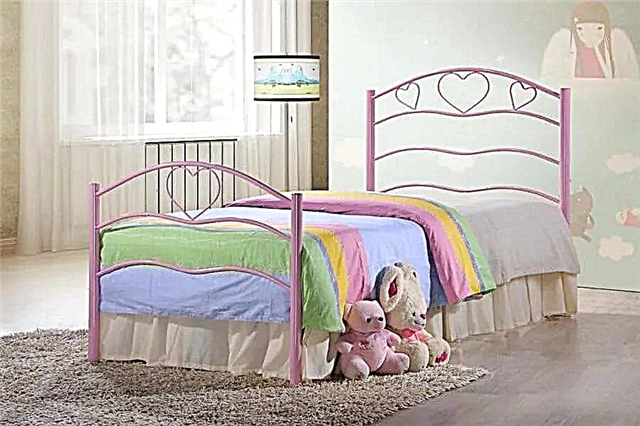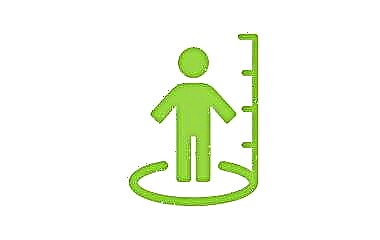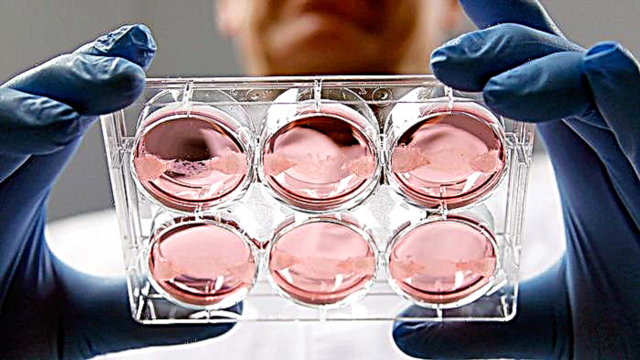The nose helps moisturize and warm the air that the baby breathes. This is the first barrier that stands between a child and an infectious agent (bacteria, virus). If the child's nasal passages are clogged with mucus, crusts, then this prevents him from breathing normally, sleeping and eating. Therefore, it is very important to provide children with regular nasal rinsing.
When may a child need a nose wash?
When may a nasal rinse be needed and how to properly rinse a child's nose? On average, every day a baby produces 1 liter of mucous secretions in the nasal cavity and even more if the child has a cold or allergic rhinitis. It is not easy for young children to cope with such a condition, they still do not know how to blow their nose, as a result of which they may develop otitis media, sinusitis, bronchitis. Therefore, it is necessary to wash the child's nose daily.
Regular nasal hygiene with a saline solution removes secretions and small particles (dust, pollen, etc.), reduces their accumulation, moisturizes the mucous membrane and prevents nosebleeds.
Rinsing the nose promotes better sleep and nutrition for the child, reduces the risk of developing colds, and reduces the duration of acute respiratory diseases. Thanks to this procedure, children are less likely to develop otitis media, sinusitis, bronchitis and pneumonia.
Indications for rinsing the nose
The main indications for rinsing the nose in babies are:
- nasal toilet for hygiene purposes;
- allergic rhinitis;
- rhinopharyngitis for any colds;
- otitis media;
- sinusitis;
- adenoiditis and others.

In the case of a hygienic nasal toilet, rinsing is sufficient 2 times a day (before and after the child's sleep), if the child has pathology - 3 times a day or more.
Are there any contraindications?
There is a small list of contraindications for rinsing the nose - this is the presence of tumor formations in the nasal mucosa, polyposis growths in the nose, the presence of a deviated nasal septum and a tendency to nosebleeds.
In other cases, rinsing the nose is allowed. This procedure is harmless and with a positive attitude of parents, children, as a rule, tolerate rinsing the nose calmly.
At what age can a child's nose be washed?
At what age can a child's nose be washed? It is recommended to use this technique from birth and continue until 7-8 years of age, or even longer if necessary.
How to rinse a child's nose correctly?
In order to properly rinse a child's nose, you need to purchase everything you need for the procedure at the pharmacy and follow some simple rules.
Preparing for the procedure - what to buy at the pharmacy?
Here is the minimum required list of purchases to be made at the pharmacy.
- Syringe (use no needle!).
- Rubber bulb and / or aspirator for young children.
- Pipette.
- A watering can device or a rubber kettle for children over 3 years old (some manufacturers (Aquamaris, for example) sell them with rinsing solution).
- Diaper or towel.

Washing technique
The technique of rinsing the nose depends on the anatomical and physiological characteristics of the child and will differ at different ages. The procedure will look different for children under 1 year old, 3 years old and over 3 years old. Consider each case below.
Rules to follow
- You should not rinse your nose less than 30 minutes before walking outside.
- It is necessary to rinse the nose after sleep and before bedtime (not less than 30 minutes).
- During the period of abundant secretion of mucus with rhinitis, the procedure should be carried out before feeding the baby for about 30 minutes - 1 hour.
- In children under 1 year old, if the child spits up profusely after eating, it is also necessary to carry out the procedure for rinsing the nose.
What shouldn't be done?
Do not use too much or too little solution.
Do not use sprays and aerosols in young children.
Do not abuse the use of aspirators because of the risk of injury to the delicate mucous membrane of the nasal cavity.
What is the best way to rinse your nose?
Today, the pharmacy network offers a wide range of preparations for nasal washing. What is still better to wash the child's nose? All solutions for rinsing the nose according to the concentration of salt in them can be divided into the following groups: hypotonic, isotonic and hypertonic solutions.
Isotonic solutions are considered more physiological. They correspond in their concentration to blood plasma and it is 0.9%. Well-known saline solution belongs to such solutions. For rinsing the nose for hygiene purposes, it is better to use hypotonic or isotonic solutions. They can also be used for diseases of the respiratory tract, for allergic pathology.
For rinsing the nose for colds, otitis media, sinusitis, it is better to use hypertonic solutions (salt concentration 2.1%), but remember that they should not be used for more than 1 week.
Ready-made pharmaceutical preparations

In the pharmacy network, you can now find a variety of nasal washes for children of all ages. One of the cheapest drugs is saline. Despite its low cost, the effectiveness of its use both for prevention and treatment remains high.
You can find it in the form of ampoules of 5, 10 ml or in bottles of 50, 100, 200 ml.
Among hypertonic solutions, sea water preparations are very popular. Such as Aquamaris, Aqualor, LinAqua, Marimer, Humer, No-Sol, Dolphin, Sialor Aqua and others. They are also represented by various lines according to the amount of salt in them - hypo-, iso- and hypertonic solutions.
For children, there is usually a prefix "Baby" in the name. There are no significant advantages of their use in comparison with other solutions, and the cost is higher.
Among the hypotonic drugs found in pharmacies such a drug as "Salin". It is good to use it prophylactically and as a nasal hygiene.
Whichever drug you choose for a child, the main thing is that the rule of the release form is observed. That is, it is very important that in children under 5 years old, drops are the form of choice. Otherwise, due to their anatomical and physiological features (the narrowness of the nasal passages, a short Eustachian tube and the direct communication of the nasal passages with it), in children, infection may spread into the ear canals and the development of otitis media.
For children under 5 years of age, it is unacceptable to use solutions in the nose in the form of sprays and aerosols. Only allowed as drops!
Preparations to be prepared
Currently, all drugs are available in pharmacies, and the same drugs, depending on the manufacturer, may be available in different price segments. However, if you wish, you can prepare some preparations at home yourself.
These drugs include saline (0.9% sodium chloride solution). Cooking is not at all difficult. To do this, mix 1 teaspoon of table salt with 1 liter of boiled water. The resulting solution must be stored in the refrigerator.
The advantage of pharmaceutical preparations is that they are accurately dosed by the pharmacist and the risk of making a mistake in the concentration of the solution is excluded. Because if you prepare a too concentrated solution, it will cause an unpleasant burning sensation of the mucous membrane and discomfort in the child.
Folk recipes
For children's practice, the use of folk recipes is unacceptable!
We live in an age of rapid development of pharmaceutical companies and widespread availability of pharmacies. Each drug, before getting on the pharmacy counter, undergoes a multi-stage test and a number of clinical trials. That is, by prescribing such a drug to a child, we know what we expect from him. In the case of using folk recipes in children, the reaction of the body can be unpredictable.
What exactly do we see in our practice, if parents ignore the recommendations of doctors and listen to advice on forums, questionable sites and just stories like “we tried and it helped us”?
Let me explain right away - “we tried and it helped us” may have nothing to do with your child. The effect of any drug is tested only on a large sample and it is far from one or two people.
There is a principle of evidence-based medicine with randomized multicenter clinical trials, and we rely only on it when prescribing a particular drug. Judging the effectiveness of a drug on the basis of one case is fundamentally wrong!
What happens if you still disobey the advice of "well-wishers"? Burns of the mucous membrane of the respiratory tract, allergic reactions of varying severity (urticaria, Quincke's edema), the development of stenosing laryngotracheitis, obstructive bronchitis with symptoms of respiratory failure, poisoning of varying severity. And this is not the whole list of what can be. The consequences of the developed reactions to these "miracle cures" can also be very different.
Features of washing the nose for children of different ages
Features of nasal lavage in children of different ages depend on their age-specific structure of the respiratory tract.
Babies
In infants, it is imperative to remember that they have a good connection between the nose and ears. Therefore, you can not use a lot of solution for rinsing the nose of such children.
Newborn - 1 to 3 ml per nostril, <6 months - 3 to 5 ml per nostril,> 6 months - 5 to 10 ml per nostril.
If your child does not tolerate rinsing the nose well, try starting with less. You can then gradually increase your dosage until you reach the amount recommended above.

Technique in the supine position:
- Always wash your hands before and after rinsing your child's nose.
- Fill the syringe with saline.
- Place the baby on your side and place a diaper or towel under the baby's head and quickly irrigate the nostril with the contents of the syringe.
- Then turn your child to the other side and repeat the same technique.
- Then you can use a nasal aspirator or a pear, since the baby cannot blow his nose himself.
Repeat steps 2, 3 and 4 if necessary. Finally, your child should breathe calmly through his nose.
Over a year
Children over one year old can wash their nose while sitting on the lap of their parents and with their head slightly bent to the knees, or lying on their side (according to the technique, as in children under 1 year old). In a sitting position, it is necessary to hold the child's head so that he does not turn.
- Place a diaper or towel under the baby's head (if lying down). Hold the syringe in your other hand. Insert the tip of the syringe into one nostril, pointing up towards the bridge of the nose.
- Quickly empty the contents of the syringe into one of the child's nostrils.
- Use the same method for the other nostril.
- If your child cannot blow his nose, you can use a rubber bulb.
- Repeat steps 2, 3 and 4 as needed.
2 years and older
The washing technique is as follows.
- Wash your hands before and after nasal hygiene.
- Fill the irrigation can or rubber kettle with saline.
- Place the child in front of the sink with their head tilted forward.
- Insert the bottle tip firmly into the nostril.
- Press down on the bottle until the solution comes out of the opposite nostril.
- Have your child blow their nose one nostril at a time.
- Repeat steps 4, 5, and 6 for the other nostril.
If the child is afraid or has a negative attitude to the procedure for rinsing the nose, then you can first demonstrate it on yourself and show that there is nothing terrible and unpleasant in this.
Over 6 years old, ready-made sprays and rinsing sprays can already be used.
How do you know if your nose has been effectively rinsed?
How to understand if a child's nose is effectively washed? After washing, the child should breathe calmly, sleep and not give up food. There should not be heard "gurgling, bubbling" when breathing. These are the basic conditions that must be met.
Better timely prevention than treatment of the disease afterwards.
Instillation of drops after washing
What drops are instilled in children after rinsing the nose? As a rule, these are vasoconstrictor drops when it comes to colds. They are represented by a large assortment in pharmacies today. These are, for example, Oxymetazoline, Nazivin, Otrivin and others. They relieve nasal puffiness, reduce mucus secretion. They should be buried in 5-10 minutes after washing.
Be sure to observe the dosage of drops recommended by the pediatrician and check the percentage of the medication on the package (age restrictions), since if these conditions are not observed, severe overdose and side effects of these drops often develop!
Drops containing antibiotics, antiviral, containing interferon, are currently recognized as ineffective, so it is inappropriate to use them.
With allergic rhinitis and adenoiditis, hormone-containing drops are prescribed (Nazonex, Fliksonase, Beconase and others). It is better to bury them also 5-10 minutes after washing.

Conclusion
Nasal rinsing is a simple and uncomplicated procedure that can greatly alleviate the condition of your child. This helps the baby to breathe independently, sleep well and eat. This prevents the development of formidable complications in children (otitis media, sinusitis, bronchitis, and others).
Remember! A healthy baby is, first of all, happy parents.



